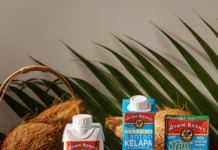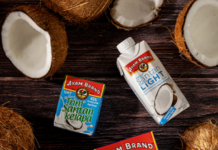 With gatherings permitted once again and the holiday season around the corner, it’s that time of the year when we start planning celebrations with family and friends, and the meals we will prepare to share together.
With gatherings permitted once again and the holiday season around the corner, it’s that time of the year when we start planning celebrations with family and friends, and the meals we will prepare to share together.
Unfortunately, festive celebrations have become synonymous with overeating and food waste, where we often buy too much and prepare more than we need.
The Importance of Environmental-Friendly Choices
According to the Food and Agriculture Organization, an estimated one-third of all food produced globally is lost or goes to waste. That amounts to about 1.3 billion tons per year, which contributes to global food insecurity.
In Malaysia alone, the Solid Waste Management and Public Cleansing Corporation recently reported that 17,000 tonnes of food waste is produced on a daily basis, equivalent to seven Olympic-sized swimming pools. Of this, 4,080 tonnes of food waste per day comprises edible food, an amount which could feed three million people three meals per day.[1]
It is a harsh scenario to consider, especially when we are fortunate enough to have food on the fridge or the pantry whenever we get hungry. But this privilege can also inspire us to make more conscious choices.
One way in which we can all make a difference is by reducing food waste, a simple action that can have a great effect.
5 Practical Ways to Help the Environment
When planning your family meals, there are several ways in which you can help reduce food waste and live more sustainably. Here are five of them:
- Plan ahead.
Whether you’re prepping nutritious meals for the week or planning the menu for your next festive celebrations, planning ahead is a great way to ensure you’re preparing only what you can consume and not serving your guests more than they can eat.
- Consider cooking with more sustainable ingredients.
People are leaning towards more plant-based diets for a variety of reasons, including health concerns, weight loss, or concerns about the environment. For those who are just starting to experiment, it might be best to adopt a “flexitarian” diet or menu, which is a primarily plant-based diet with the occasional inclusion of meat, poultry, fish, or eggs. It’s a great way to maintain a healthy, balanced diet while helping to protect the environment by cutting down on energy and resources used to produce red meat.
- Plate up in the kitchen instead of at the table.
Consider portioning out your meal in the kitchen. Serving food family-style makes it easy for everyone to help themselves, which is why it’s not such a good idea if you’re trying to control portions. With serving dishes on the table, it’s just too easy to have “just another spoonful.” One of the biggest sources of food waste comes from food left on the plate, which often ends up in the trash.
- Repurpose foods that are reaching expiration.
There are many ways to get the most out of your perishable food items, even when they start to look a little sad. When your tomatoes get too mushy to cut up for salads, consider making them into homemade tomato sauce. Are your bananas getting brown and squishy? Give them more life by unpeeling them, and keep them in the freezer as a healthy smoothie ingredient! Soups and stews are great dishes that can incorporate many different ingredients, such as veggies that might be a little past their prime.
- Donate extras to those in need.
Clearing out your pantry? Consider donating extra shelf-stable food items to local food banks and charities.
The next time you are cleaning out your refrigerator, freezer or pantry, pay attention to what you’ve tossed and make an effort to reduce food waste in the future.
[1] https://www.kpkt.gov.my/kpkt/resources/user_1/Berita_Pengumuman/2021_Berita/BERITA_4MEI2021_MAJLIS_PELANCARAN_VALUE_FOOD_NO_WASTE.pdf

































































































